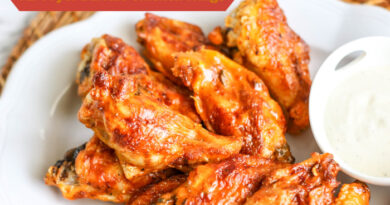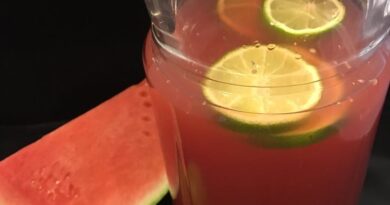
Why You Should Read Protein Bar Labels Carefully
Protein bars are nice snacks to take with you at work or eat after a workout. However, many products on the market only seem healthy and nutritious. At the same time, they are stuffed with sugar, sugar alcohols, salt, and artificial fillers, among other ingredients.
How to choose a really healthy protein bar that will only contribute to your health and well-being? What ingredients should you be aware of? What amount of fats or protein itself can such bars contain?
 These questions concern everyone who takes care of themselves and wants to consume foods that provide real value to their bodies. If you have been thinking about how to tell a healthy snack from a questionable product, read on to find out what ingredients you need to be aware of when reading a label of a protein bar.
These questions concern everyone who takes care of themselves and wants to consume foods that provide real value to their bodies. If you have been thinking about how to tell a healthy snack from a questionable product, read on to find out what ingredients you need to be aware of when reading a label of a protein bar.
Artificial Ingredients
First of all, let’s talk about the artificial ingredients that you may spot in a protein bar content. In short, you need to be aware of any component that is hard to pronounce or looks like a chemical title.
Thus, there should be no artificial colors, flavors, preservatives, or fillers in the protein bar. Moreover, many such snacks are marked as gluten-free products.
Salt
Even protein bars with sweet flavors may contain a lot of salt. Therefore, if you see an inadequate amount of this component, for instance, five grams, put such a product back on the supermarket shelf. There is no way a protein bar can contain that much salt.
Fat
A healthy protein bar can contain up to fifteen grams of fat in total, with two grams of saturated fat maximum from this amount. If you spot some trans fatty acids on the label, you can be sure that this product relates more to fast food than a nutritious snack.
Among the ingredients that you should be aware of the most, palm kernel oil is the main one to avoid. It is a cheap saturated fat that is received from the kernel of the oil palm with the use of a gasoline-like hydrocarbon solvent, and that definitely sounds not okay. This oil is used in fast food and snack manufacturing to make the products more resistant to temperature changes and prolong their shelf lives.
Not Enough Protein Content
Normal protein bars contain around 10g of protein content per package. If the amount you see on the label is much lower, you are holding a well-marketed candy bar. If the figure is much higher, the chances are high that the information provided on the label is irrelevant, and you should not purchase such a product for sure.
Also, the protein used in such bars is usually received from dairy or plants, and the most popular options are whey and soy proteins. However, you may also spot hemp, rice, milk, eggs, or even peas components.
In case you are allergic to some components mentioned above, or you are lactose-intolerant, you need to double-check a label of any protein bar you are about to buy. You need to pick the bar that contains the type of protein you can safely consume, and with a variety of such snacks available on the market, it is possible to find the right product for yourself.
According to BBC, on average, a man needs 55g of protein, while for a woman, the figure is 45g. That’s why you need to check the labels of the product claiming to provide you with a daily dose of protein carefully.
Low-Carb Vs. Added Sugar
You need to look for low-carb protein bars. As recommended by Marina Turea at GiftWits, such products don’t have added sugar that may sabotage your diet.
Protein bars with added sugar mentioned in small print on the back of the packaging are not that healthy as they may seem at a glance. Also, according to ABCNews, a manufacturer may replace the word sugar with basically the same names, from brown sugar and corn syrup to dextrose, glucose, and even maltodextrin.
On the contrary, low-carb products usually not only don’t have added sugar but artificial ingredients and other components mentioned above that won’t contribute to your healthy lifestyle. Thus, instead of being into “0 Sugar!” and “0 Calories!” marketing slogans, make sure to check the label of the selected protein bar for the sugar components mentioned above.
Sugar Alcohols
Following the previous point, sugar alcohols are also a bit tricky ingredients you may find written on a protein bar label. Such components as sorbitol, xylitol, among others, are used as low-calorie sweeteners in many energy bars and so-called healthy sweets. However, they often cause bloating and diarrhea, and such conditions will not brighten up your day for sure.
Promised Multivitamins
Also, many protein bars claim to contain whole multivitamin complexes within a single package. However, such products are not made to provide enough vitamin supply to people and are made for delivering protein content in the first place.
Thus, don’t rely on protein bar labels that promise to give all the nutrients and vitamins you may need. If you have a vitamin deficiency, it would be better to opt for the right products created specifically as multivitamin complexes. As mentioned by this review guide on HeathCareWeekly, you can rely on guides and reviews of multivitamin products published on such reliable core sources.
Final Thoughts
Protein bars proved to be great snacks containing a lot of useful nutrients. However, not all such products are as healthy and sugar-free as you may read on the package.
Therefore, it is essential to read not only the bright labels and stick to a catchy design but also check out the labels with the list of ingredients. Avoid products with a high content of sugar, salt, fats, a bunch of multivitamins, and unpronounceable names. The shorter the content list, the better the quality and the more nutrition you can expect from the bar.
Keep in mind the information above when shopping for protein bars next time. This way, you will easily tell a healthy snack from a well-marketed one and buy a nutritious product for sure.









So good to know! I’ve been eating protein bars more often lately, but I’ll definitely be taking a closer look at the label and ingredients next time!
Good reminder to read the label to know what one is really getting when buying these bars. Sure don’t need the extra sugar and preservatives.
I never had really thought about this but it makes perfect sense. I will be looking a little closer now.